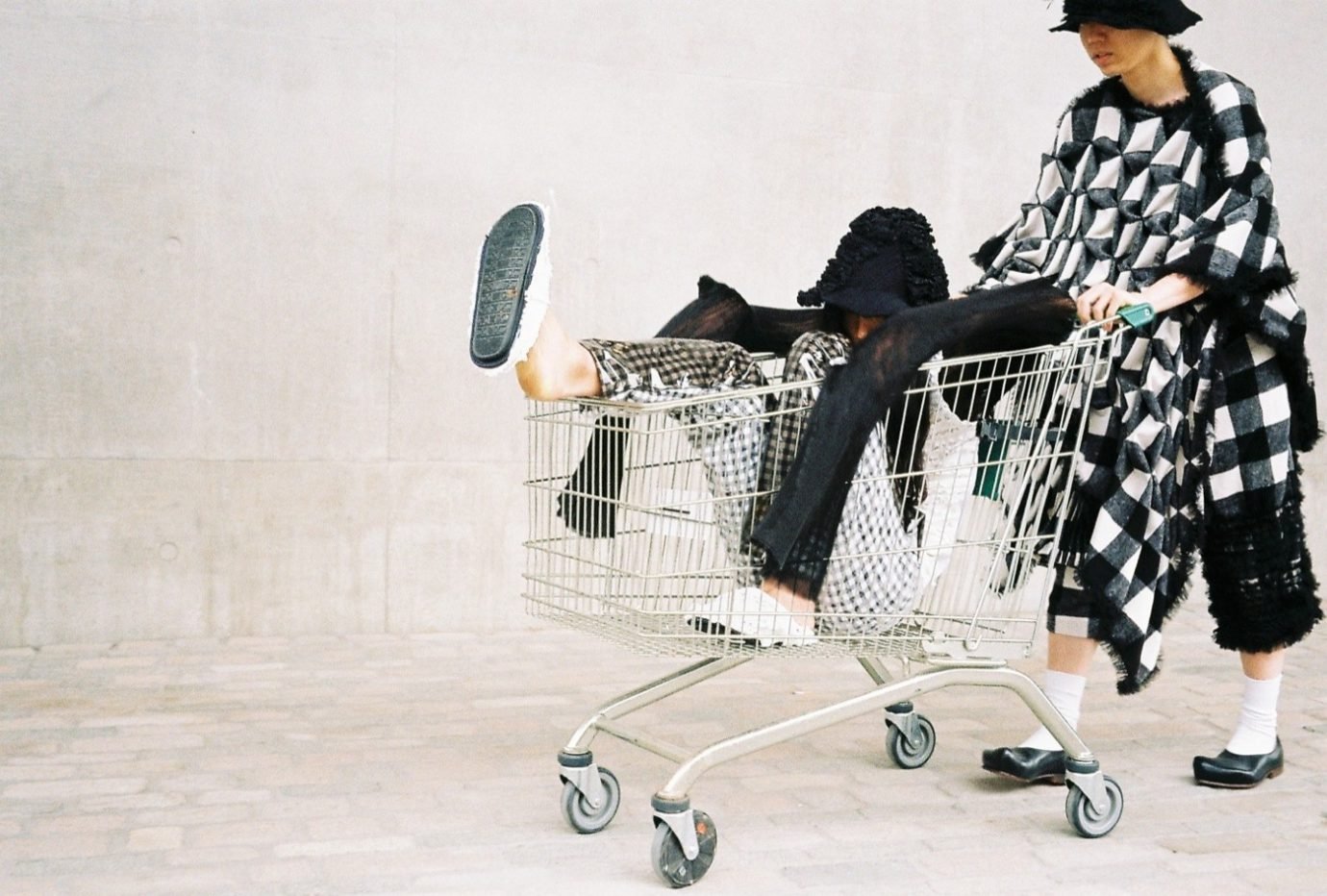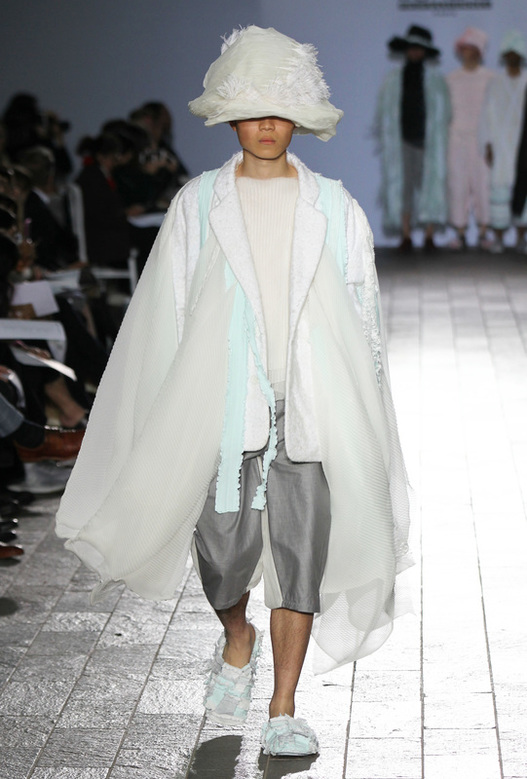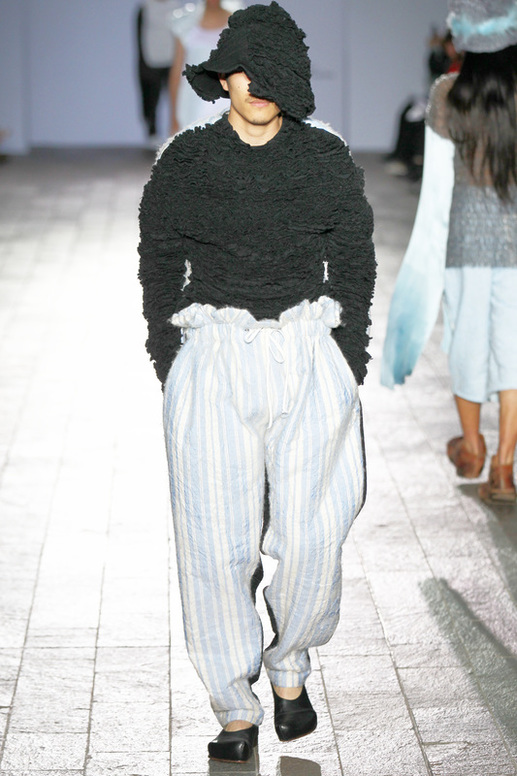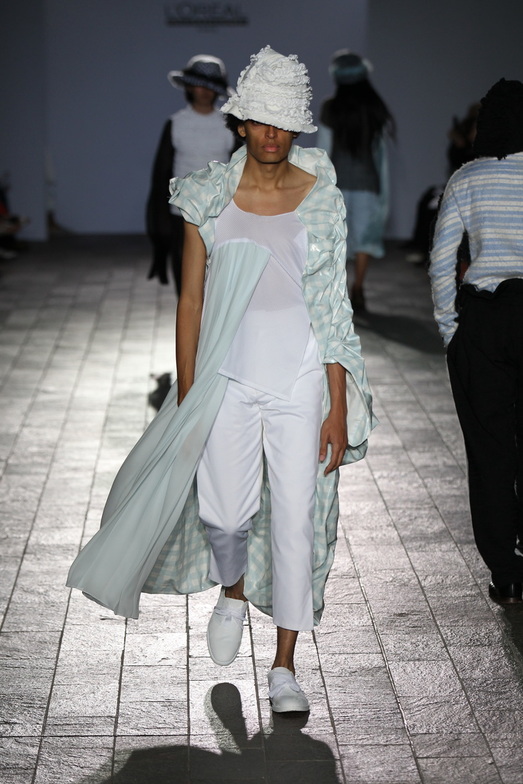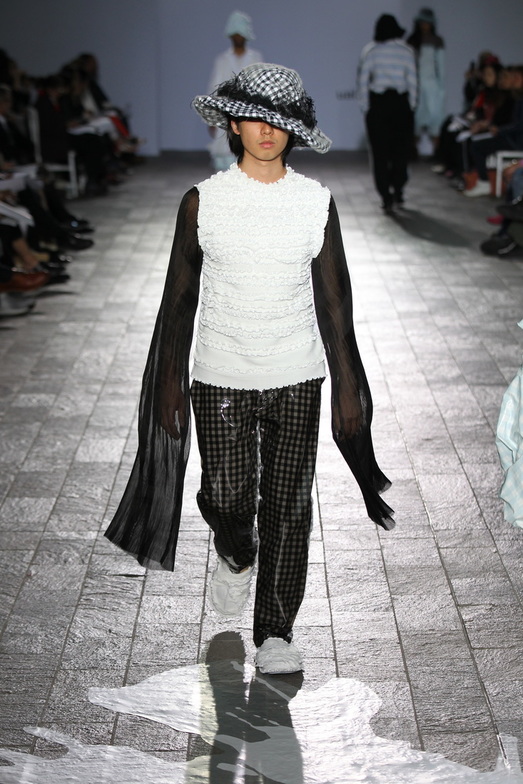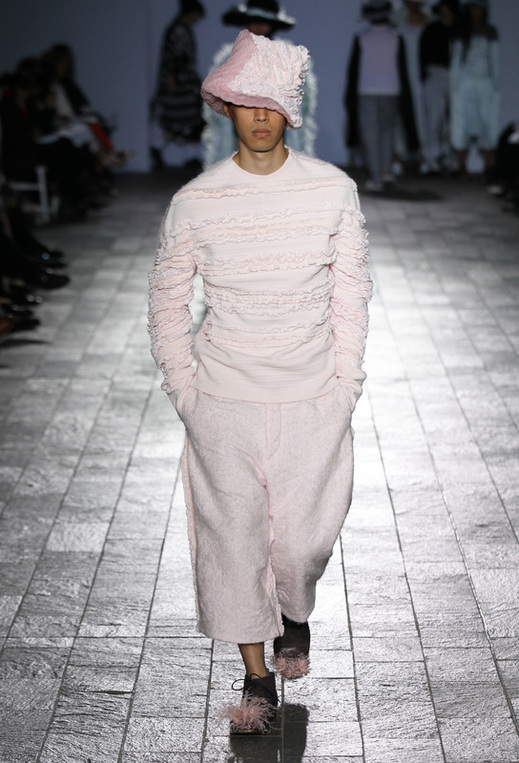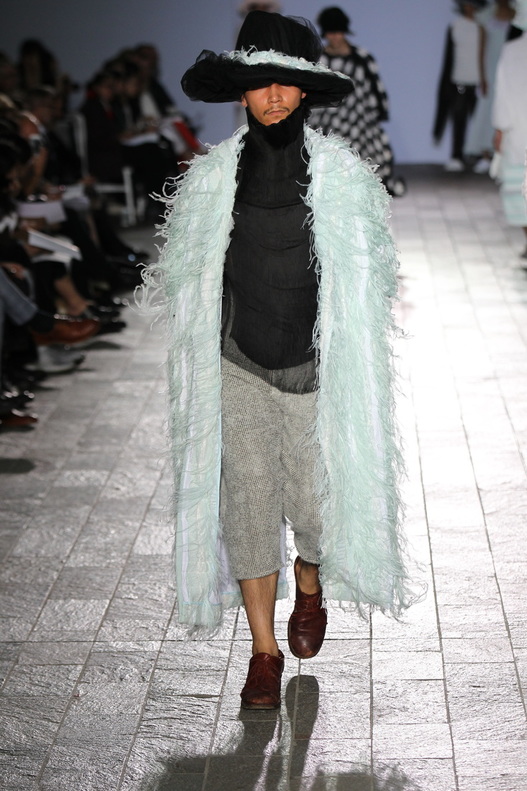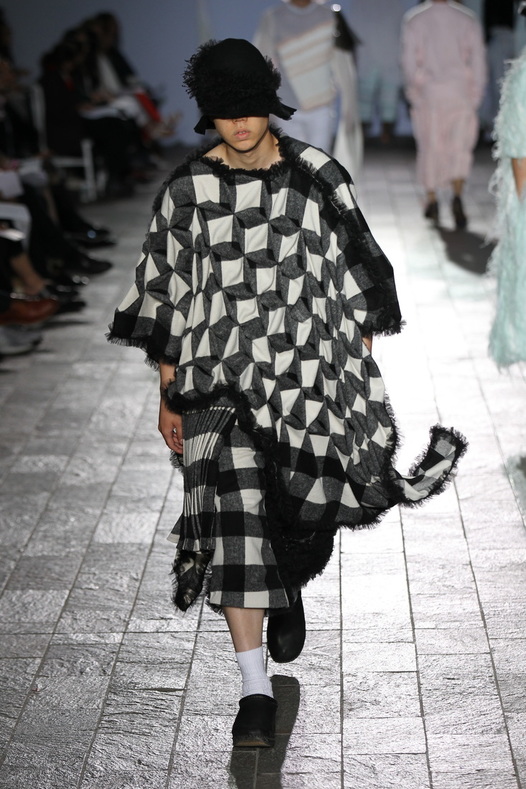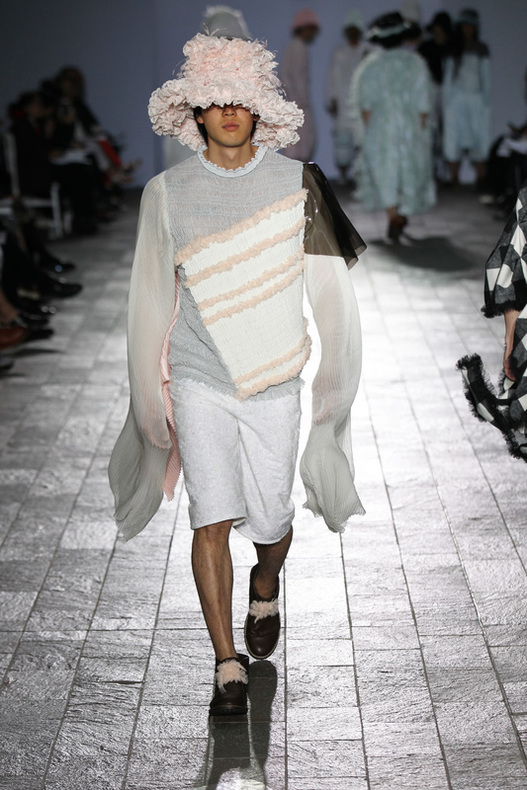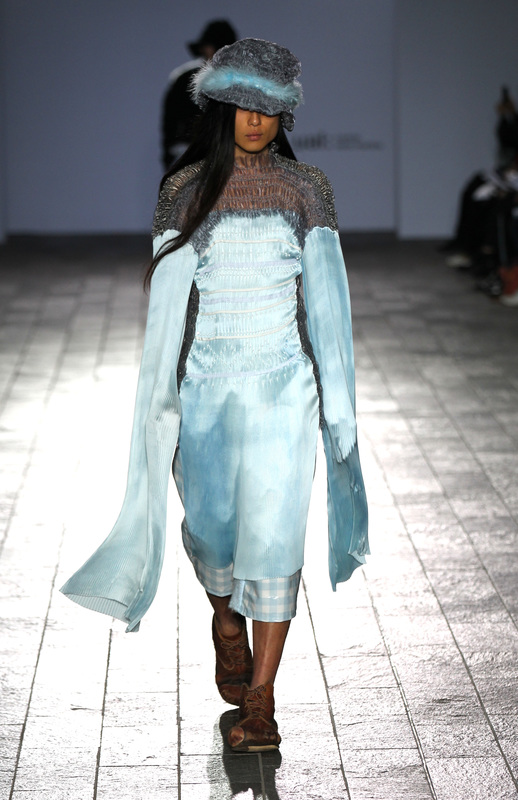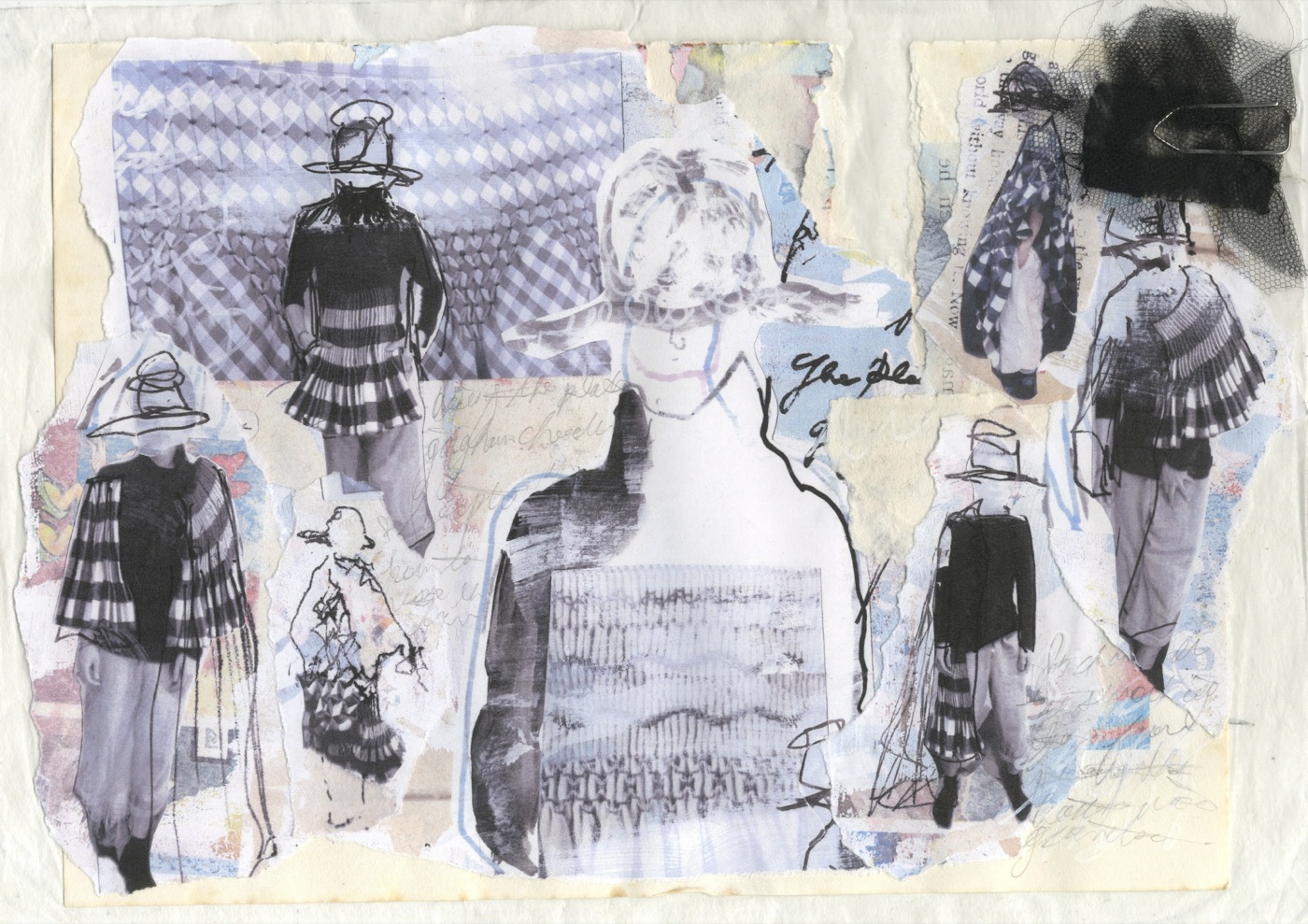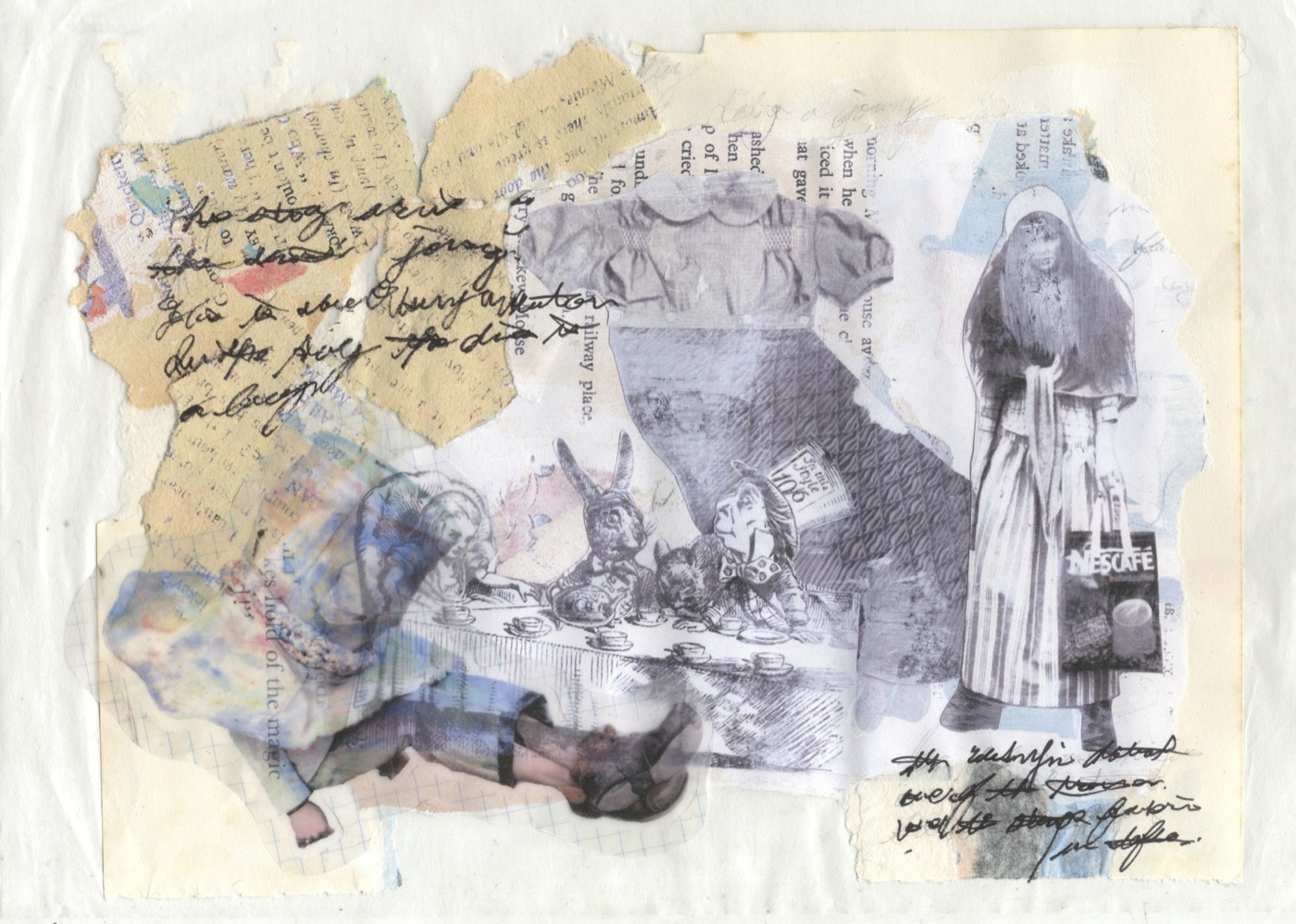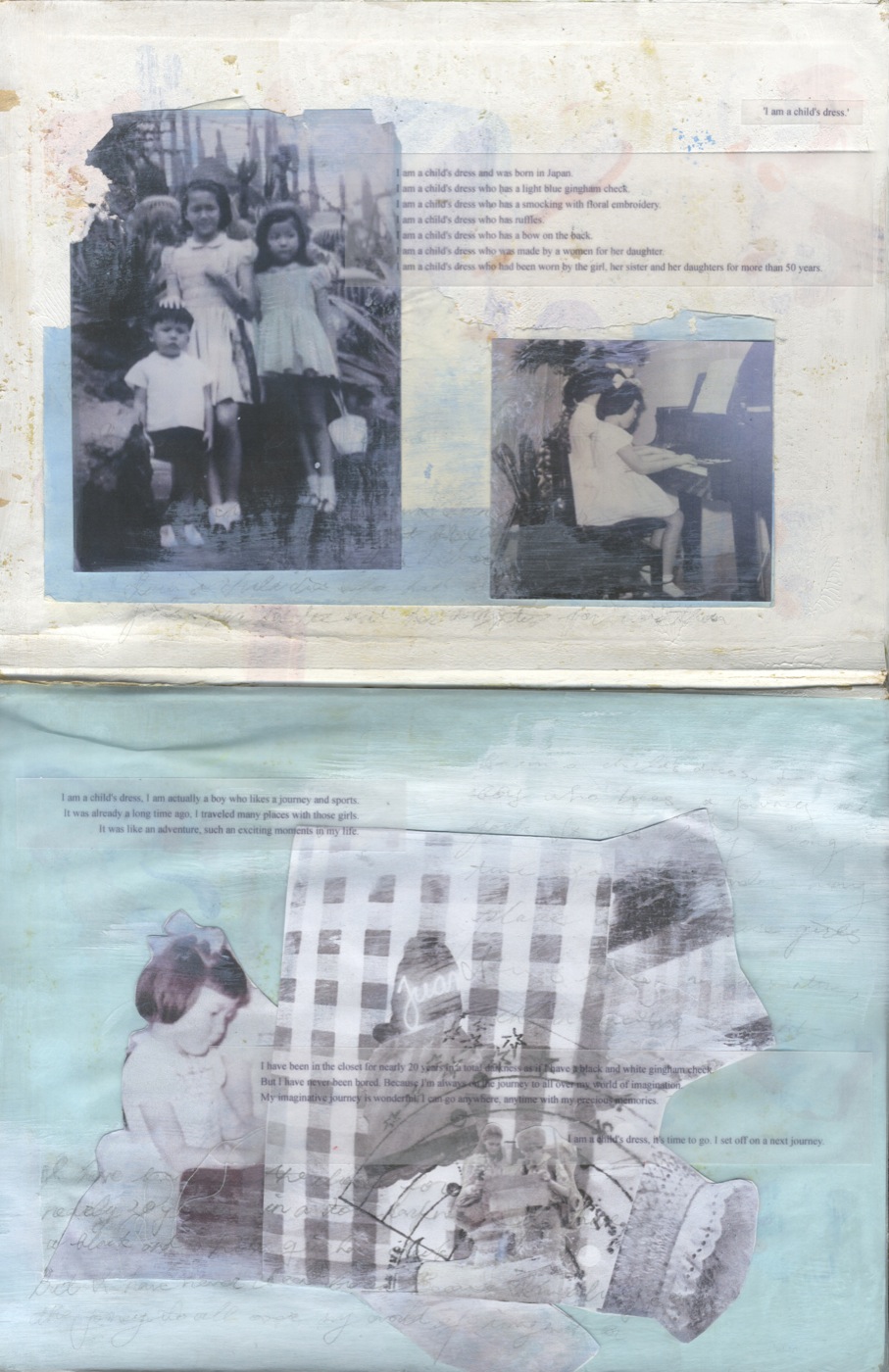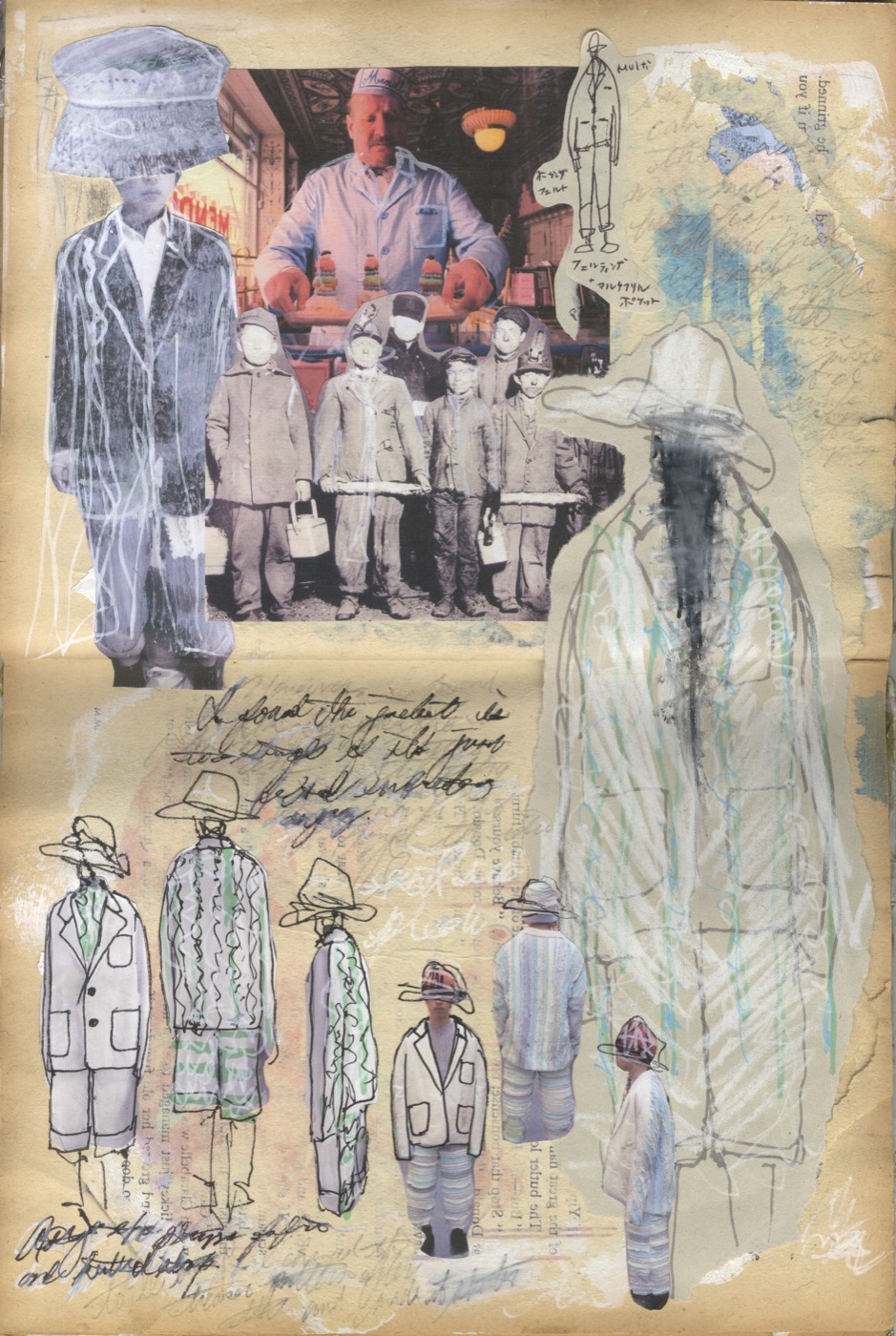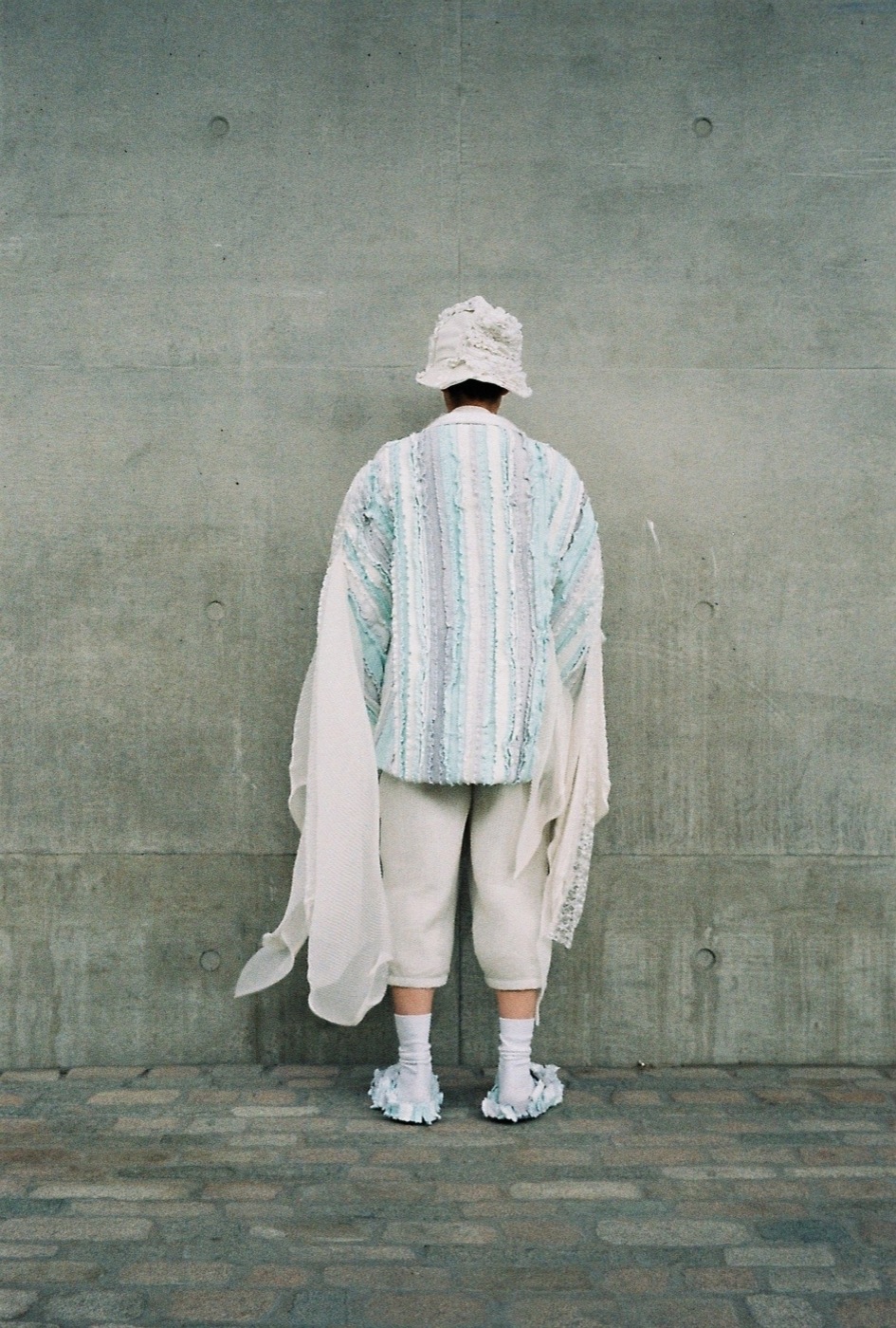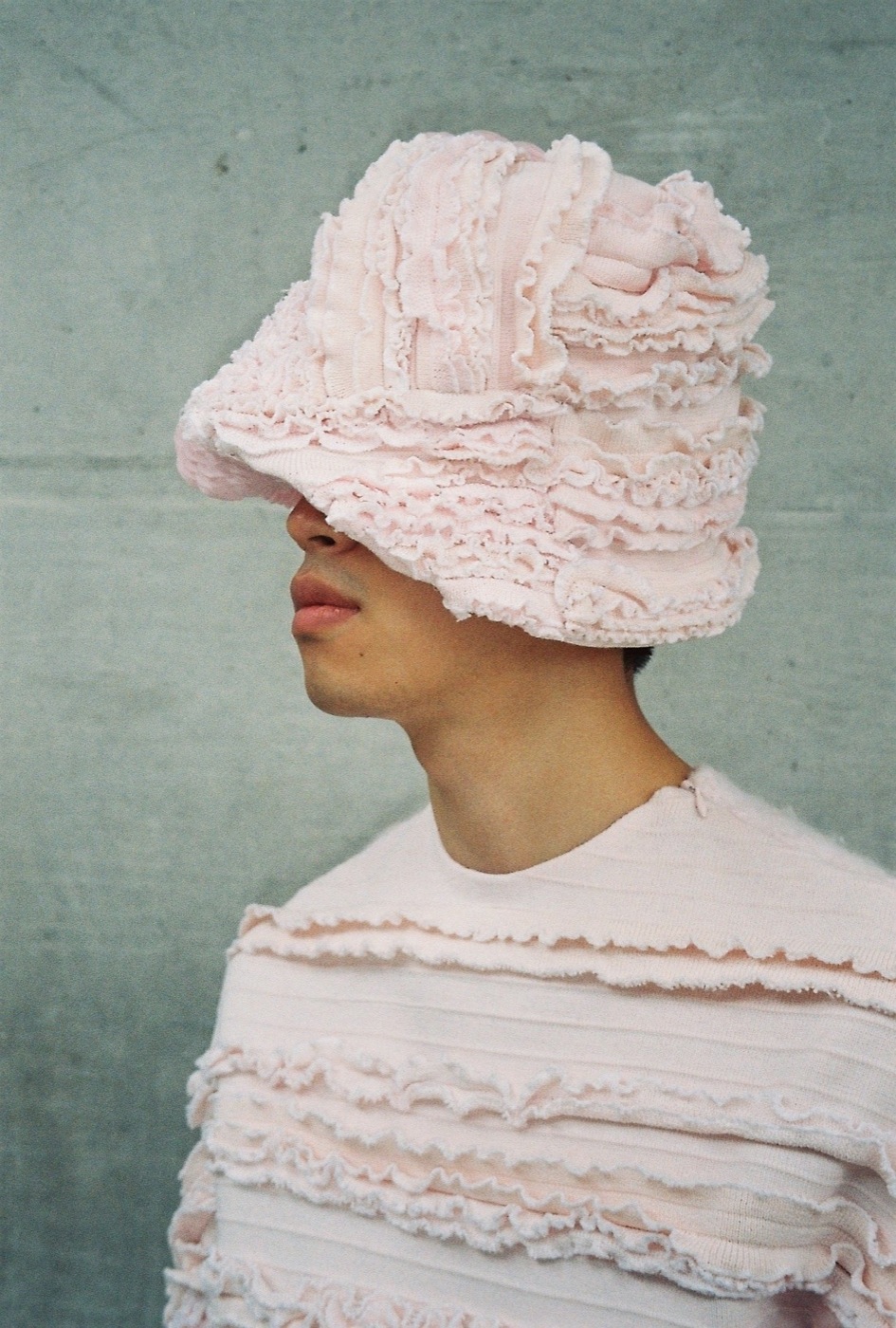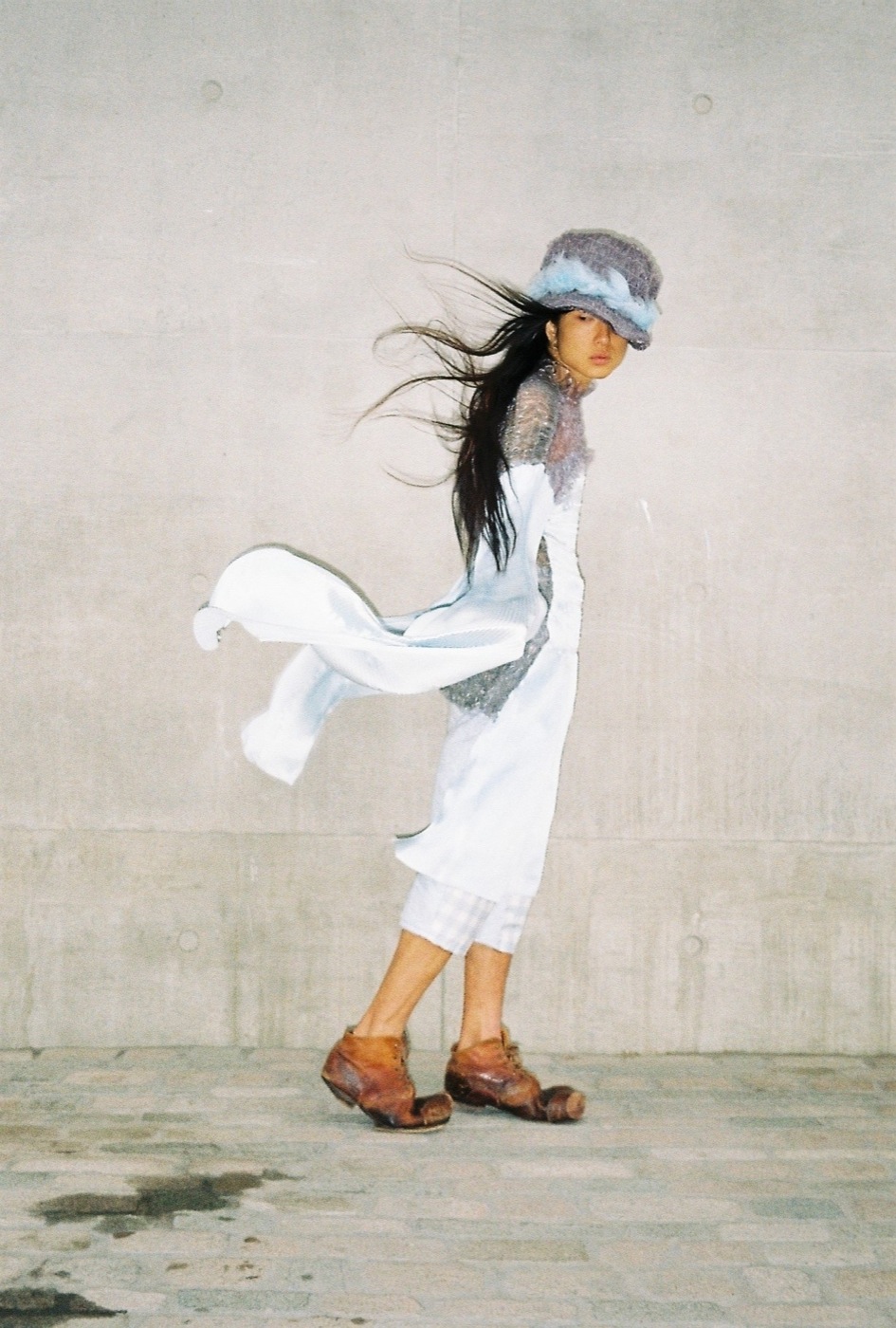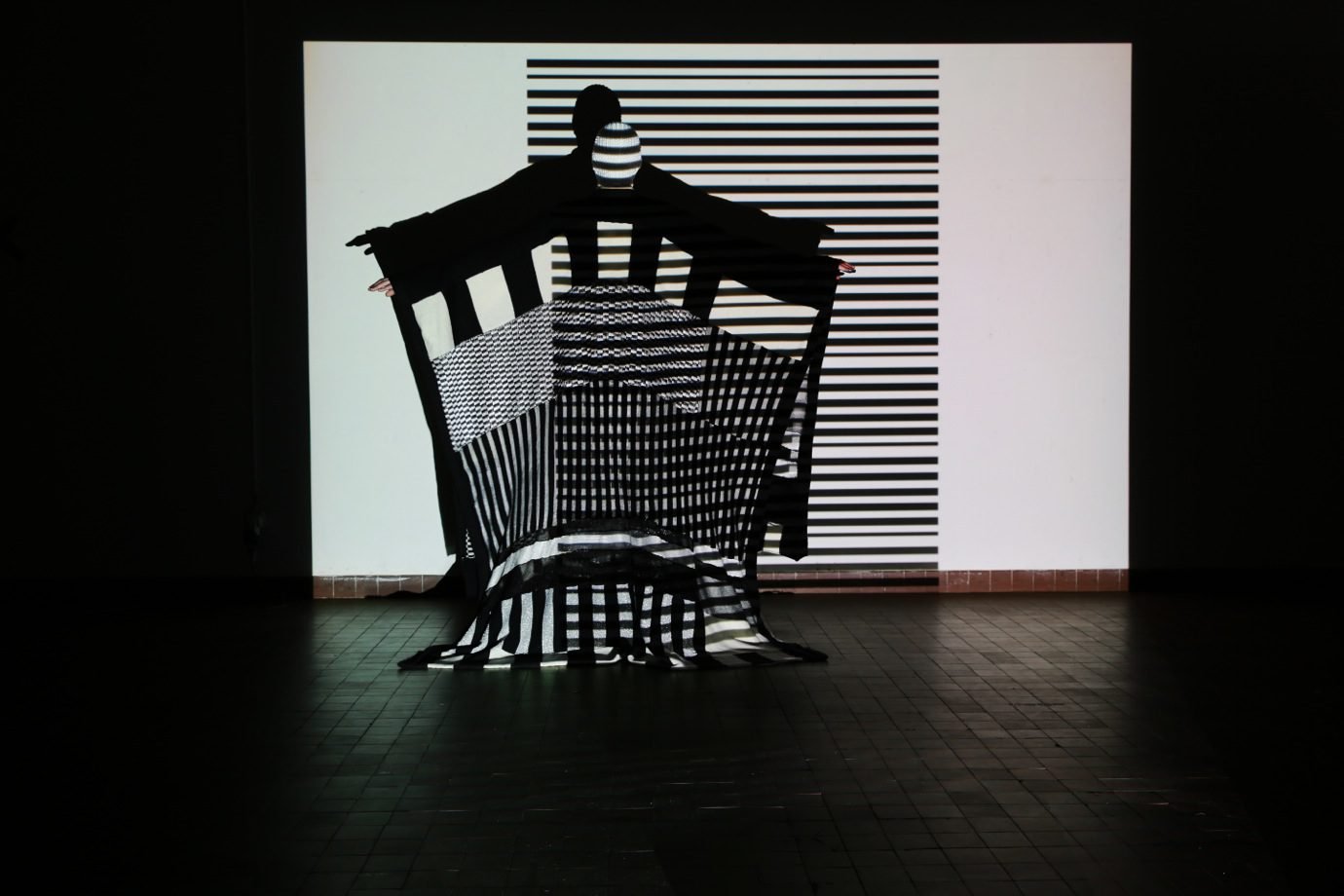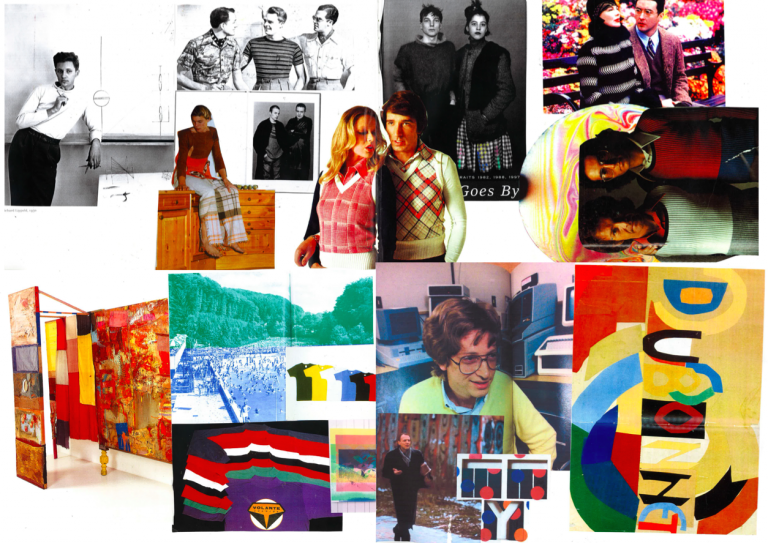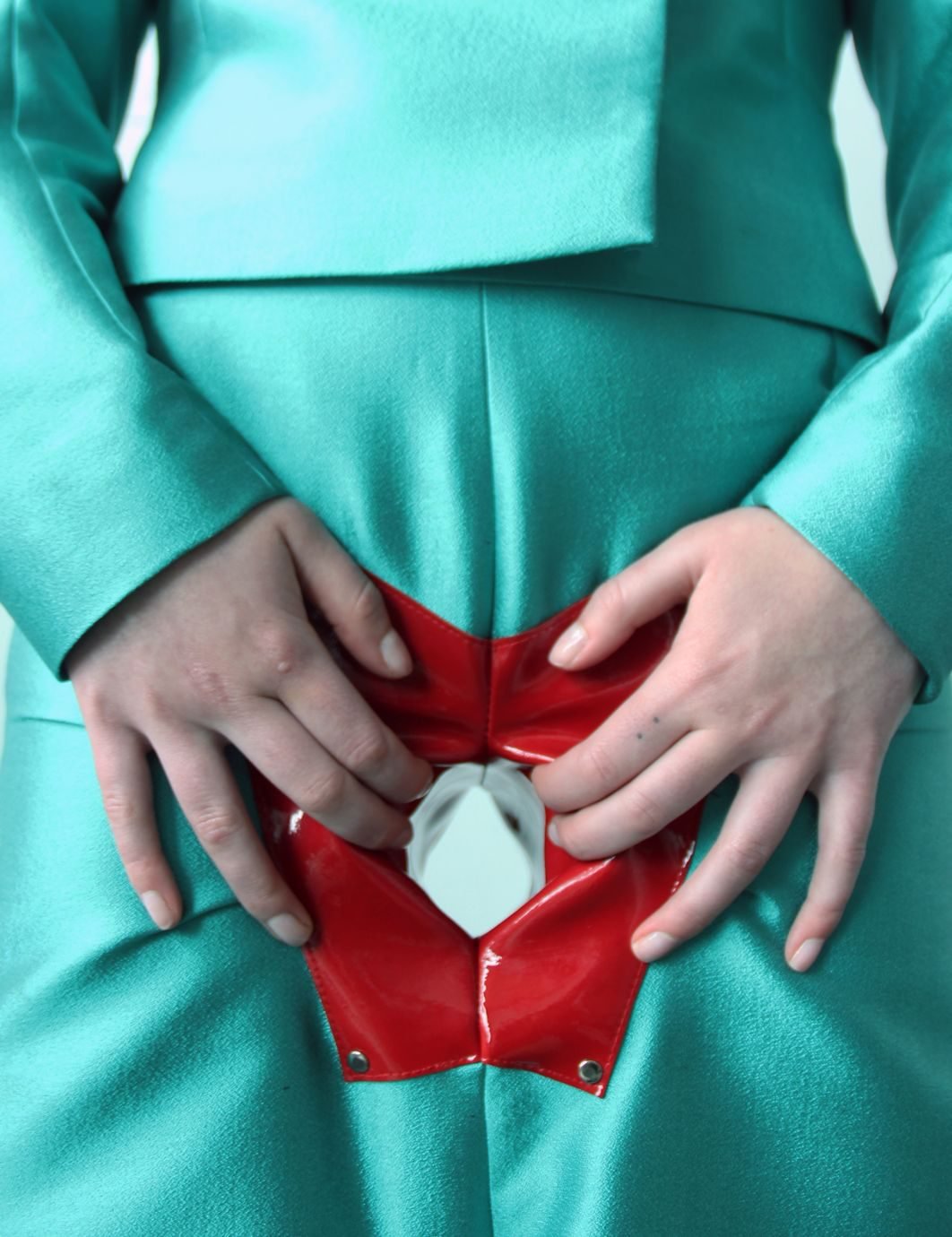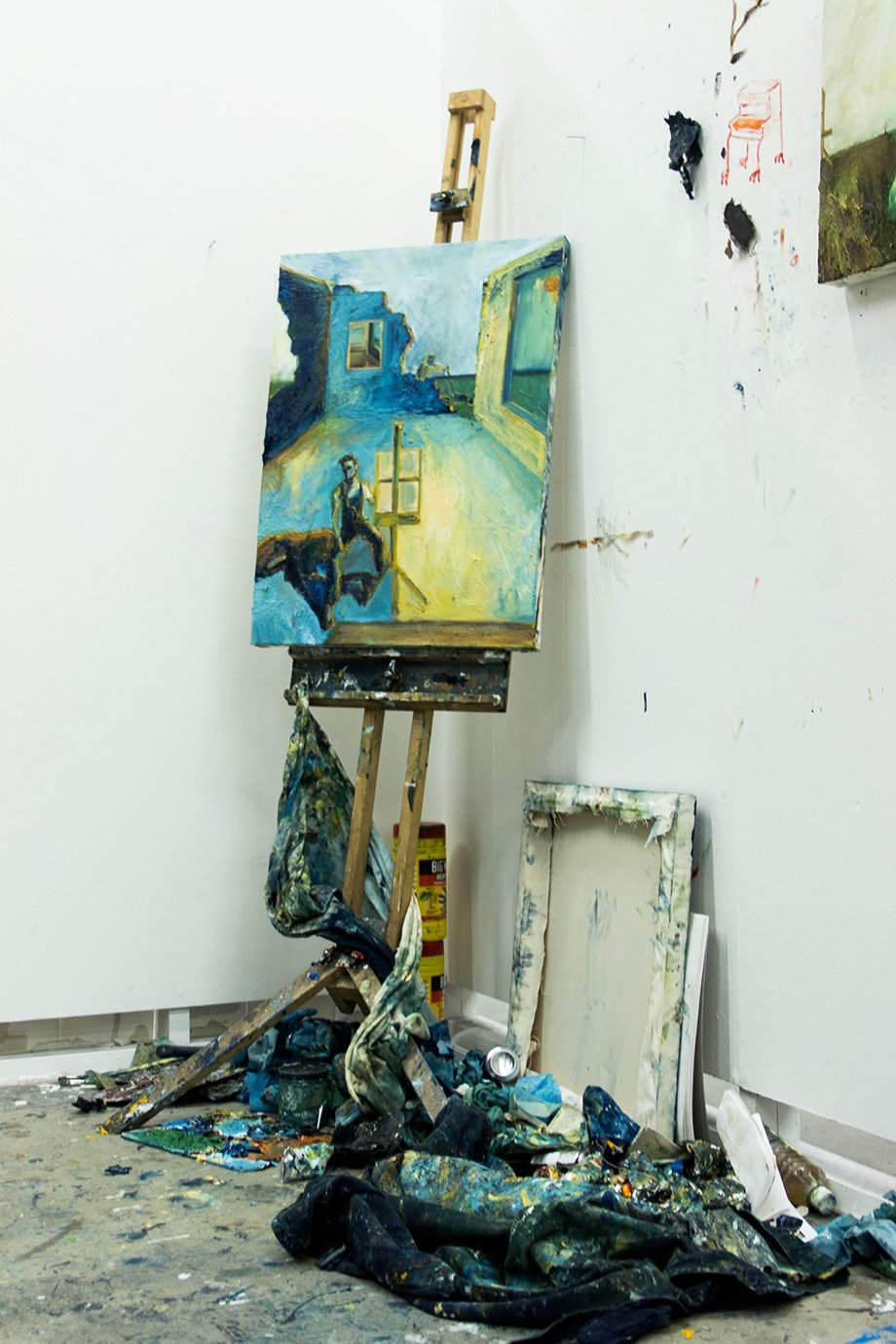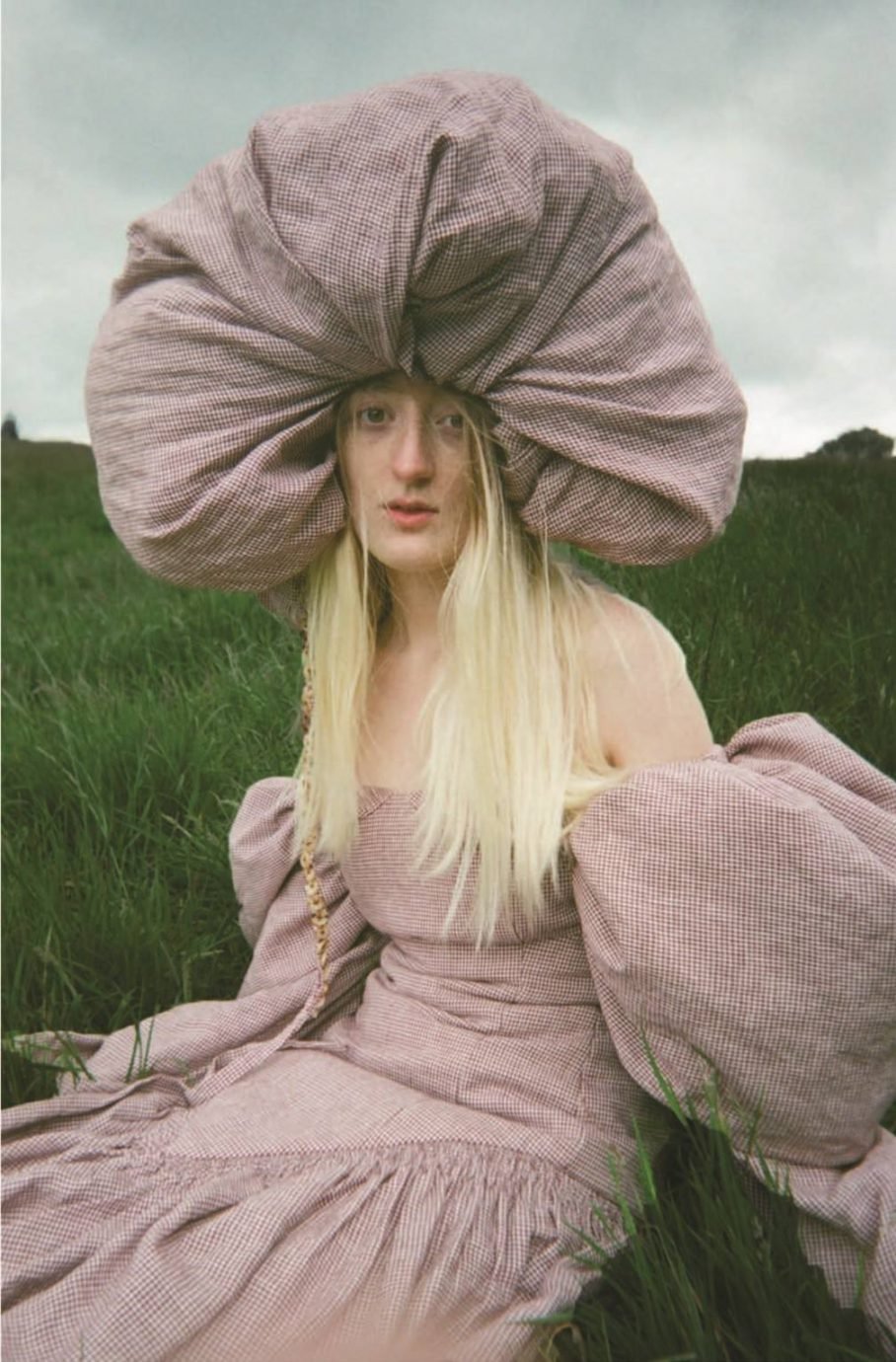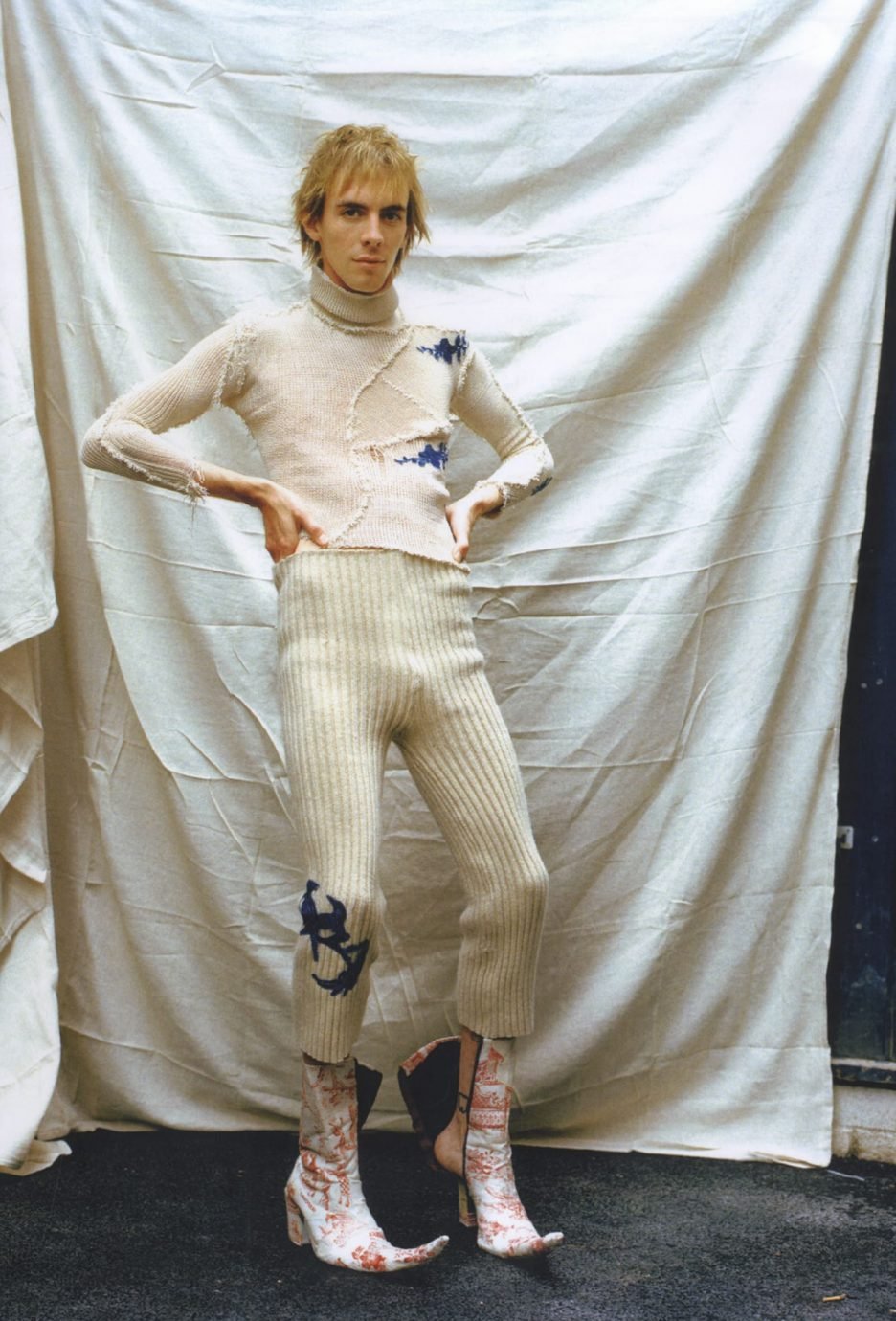What was the conceptual starting point of your graduate collection?
My collection was inspired by a smocked children’s dress that my grandmother made, and was passed on to my aunt, my mom, me, and my sister for nearly 60 years. I turned the journey of the dress into an imagine story, which I based my collection on. At the beginning of my research, I just randomly collected images that I liked without thinking too much about it. But when I started to analyze why I was so attached to these images, I suddenly remembered my old dress. When I asked my mom to send me a photo of it, it turned out to be exactly what my research was all about. At that point I started to realise that I was very influenced by my childhood memories, and so the story came along.
How do you create a visual narrative out of an abstract concept?
I usually start by collecting images that I like. From this, as well as abstract ideas, I try to find things that share common features, and let these key ideas become the core of my visual narrative. Sometimes it can be a bit challenging to translate it into something practical, but once I’m on the right track, the conceptual idea has an ability to display itself quite naturally.
How did your collection develop during the course of the year?
I felt very lost and struggled a lot during the whole process, especially after developing all the textile samples. As soon as I had the manipulated fabrics in real size and started to create the looks, I suddenly found a clear direction, and got some ideas to improve the finals. Between the show and the final line-up I’ve actually changed quite a lot.
Do you get inspired by every project? If you don’t, how do you make projects work for you when you get stuck?
By walking, talking and eating cakes.
What do your design ideas mostly revolve around?
My imaginary wonderland.
What does your development process usually look like?
I focus a lot on the materials at first. I experiment with knits, colours and create different textile samples. Then I continue by making a selection among these options; picking out the ones that I would like to use and start configuring the shapes.

